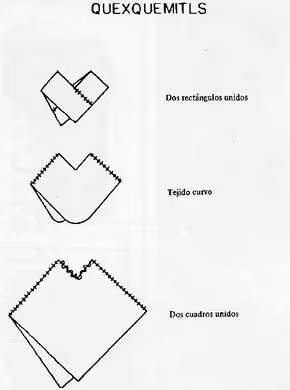Clothing During the Classic Maya Period: Part One

Clothing is one of the most important forms of identity and expression we have as humans, and for the ancient Maya, it was no exception. In this article, the first of five parts, we will explore upper body clothing during the Classic period.
Clothing
The type of upper body clothing worn by the Maya is characterized by its simplicity and practicality and can be divided into five groups:
- Wrapping garments
- Garments with a head opening that hang from the shoulders
- Open-seamed garments
- Closed-seamed garments
- Fitted garments
Wrapping garments consist of a single piece of fabric that is draped over the body. Among the most common are waistbands, headbands, cloaks, shawls, skirts, and wrapped skirts.
Garments with a head opening that hang from the shoulders covered the front and back, leaving the sides exposed. Common examples of this type of clothing include ponchos and quechquémitl.
Open-seamed garments are those that resemble vests and are sewn at the sides, but open at the front.
On the other hand, closed-seamed garments were those that were partially sewn at the sides, forming a tunic with openings for the head or arms. This category includes huipiles, tunics, and sleeveless shirts.
Finally, fitted garments were those made in such a way that they followed the lines of the torso, similar to a loose jacket. This type of garment was the only one that was cut and crafted to give it a specific shape.
Regarding the decorations that a garment could have, they were made through painting. Although there is evidence that they may have embroidered their garments, painting was more common. The most common motifs or shapes used for decoration were: circular motifs, circular and quadrilobed patterns, cut circles, geometric designs, floral patterns, and finally, monster designs.
Each of these designs had its own meaning. For example, according to Tate (cited in Morris, 2024), one of them represents the open jaws of Cauac, or the reptilian Earth monster. Within this monster, the knot symbolizing the mat can be seen, which is associated with the ruling throne and governance in general.
It can be observed that, as in the present day, the clothing of the ancient Maya not only served functional purposes but also represented a worldview and identity. For us, as archaeologists, it also allows us to see and differentiate the various social classes that made up society, as a long ceremonial huipil, which represented opulence, is not the same as a short one, which required less time to make.
Finally, it is important to highlight the various sources that can give us insight into each aspect of the lives of our ancestors, whether through graphic records, such as codices, or the interpretation of figurines, which provide evidence of a unique way of dressing.
References
La moda clásica, al fin : LA VESTIMENTA DE LAS FIGURILLAS MAYAS DE LAGARTERO . (2024). Antropología. Revista Interdisciplinaria Del INAH, 9, 19-31.